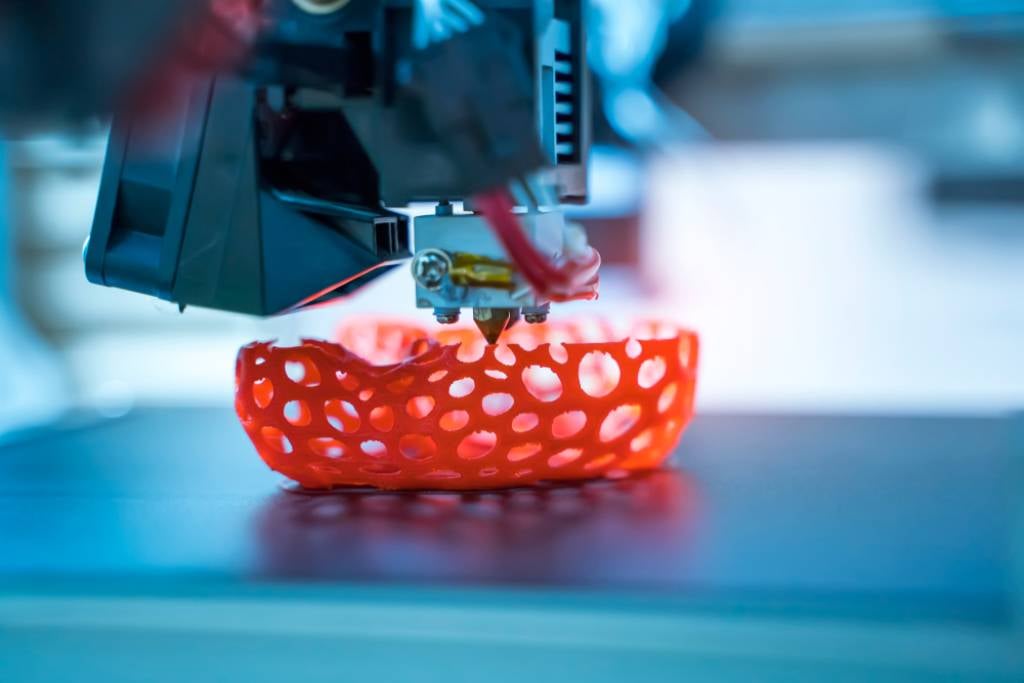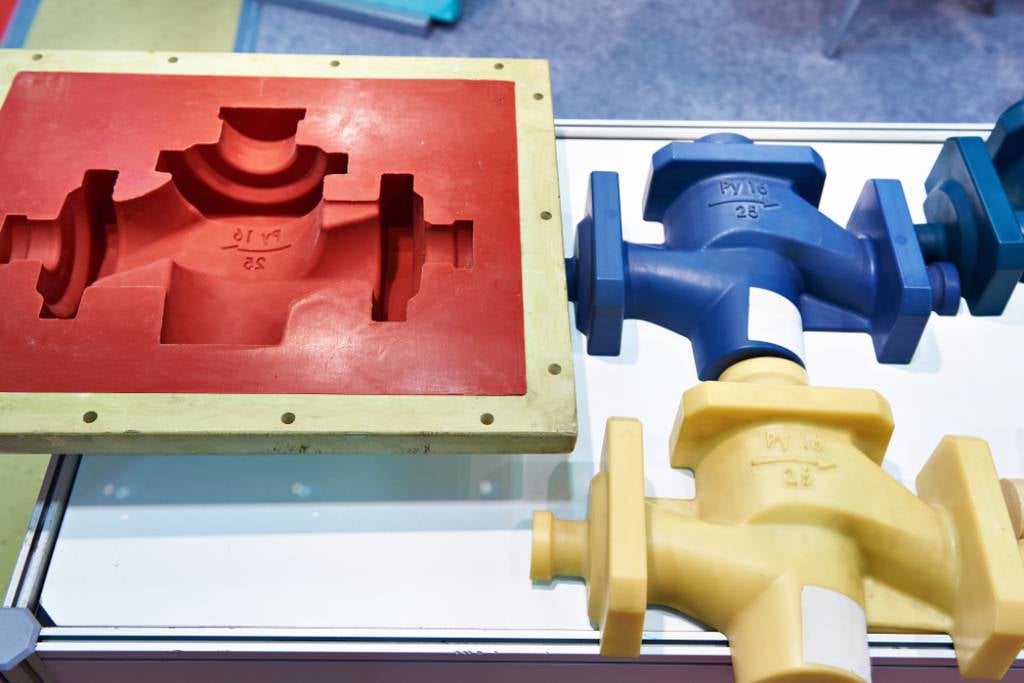
Manufacturers have many options for producing parts, including 3D printing and injection molding. Each manufacturing method offers unique capabilities and certain limitations for product design. These key factors should be considered when deciding the best option for a given application.
Before diving into the details, getting a basic understanding of 3D printing vs injection molding is important.
What is 3D Printing?
It is a form of additive manufacturing that involves creating a 3D object layer by layer from a digital file. 3D printing adds materials layer by layer until the final object is formed. The 3D printing process begins with a digital design of the object. The object is divided into horizontal layers in the digital design file, and the sliced file is sent to the 3D printer.
The printing process may involve mixing plastic, binding powders with an adhesive, or etching metal with a high-powered laser. Finally, the object may need to be finished, including removing support structures, curing, or surface treatment.
The Advantages of 3D Printing
If you are looking at 3D printing vs injection molding, these benefits might be appealing to you:
- It is a more cost-effective deal for low-volume production.
- Lower upfront cost since you only need a finished design file to start printing.
- By printing individual layers, 3D printing can create intricate shapes, geometries, and internal structures that would otherwise be difficult to construct.
- Materials are added layer by layer, so making adjustments to a design is easier. This makes it perfect for rapid prototyping and customization.
- 3D printing can give you quicker results for a finished product.
The Disadvantages of 3D Printing
When considering 3D printing vs injection molding, these drawbacks are factors to take into account:
- The layer-by-layer process is tedious with 3D printing vs injection molding. 3D printing offers a much slower turnaround time for large batches because of curing time and how slowly it may take to print complex parts layer by layer.
- Parts designed will not have high accuracy and preciseness with 3D printing vs injection molding. The parts designed won’t have the same repeatability that injection molding offers.
- The dimensions of 3D printed objects are restricted by the size of the printer's build platform. Larger parts would not be suitable for 3D printing vs molding.
- Some materials can't be 3D printed, so the process is limited in its application.
- 3D-printed parts may have visible lines on their surface, leading to a less-than-ideal texture. Post-processing steps such as sanding and chemical treatments create a smoother appearance.
- A 3D printed part may be weaker because each layer is fused during the printing process creating many vertical breakpoints.

What Is Injection Molding?
Injection molding is a manufacturing process where a mold is precisely machined and molten material is injected under high pressure to form a finished product. Once the product is cooled, the molten material solidifies, taking the shape of the mold cavity.
The Advantages of Injection Molding
When it comes to injection molding vs 3D printing, you should carefully consider these factors:
- Once the initial setup is complete, each item can be produced quickly, so the turnaround for production can be shorter for injection molding vs 3D printing.
- The initial costs of design and molding can be spread across a production run, significantly reducing the cost per part.
- It is ideal for making intricate shapes from various thermoplastic, elastomeric, and thermoset polymers.
- Injection molding uses machined molds, which gives precise results. Each product produced from the mold closely resembles its design with tight tolerance. High repeatability and accurate results are ensured with injection molding vs 3D printing.
- Parts are high-quality and durable because they are made without the stress points of layers created with a 3D printer vs injection molding. Since molten material is poured into the mold by an injection molder, the finished part is formed as one piece.
The Disadvantages of Injection Molding
These drawbacks are important when deciding if you need injection molding vs 3D printing:
- The molds used in any given production process must be regularly maintained. Maintenance ensures they don't become damaged or worn, which can add to the cost of that process. Sometimes, they may need to be replaced.
- Injection molding has limited flexibility for design and customization. If you need changes to the design, you must create a new mold each time. This can add to the cost of production with injection molding vs 3D printing.
- The lead time from design to production can be extended due to the necessity of creating a mold. Once the mold is ready, production times can be greatly reduced.
Which is Best 3D Printing vs Injection Molding?
If you're looking at the 3D printing vs injection molding cost, you need to consider the production size. Injection molding is the most cost-effective for mass production compared to 3D printing, but it can still be used for low-volume production runs. Conversely, 3D printing is more cost-effective for short-term applications like rapid prototyping in small batches.
Another main concern for 3D printing vs injection molding is strength. Injection molded parts have better structural integrity because the parts are made without or joined parts, unlike 3D printed parts.
If you need help determining a manufacturing process suitable for you, then let the experts at RCO Engineering help. We have years of service and clients across different industries.

Comments